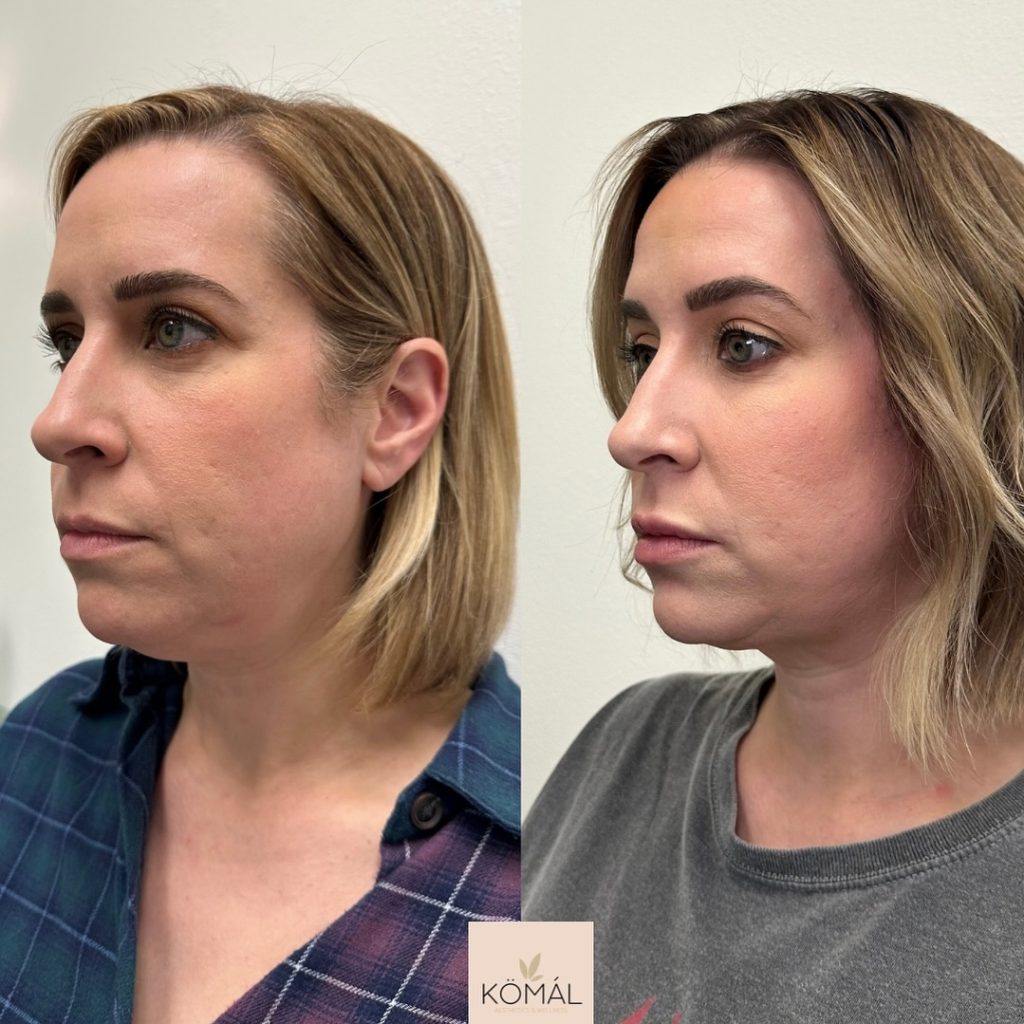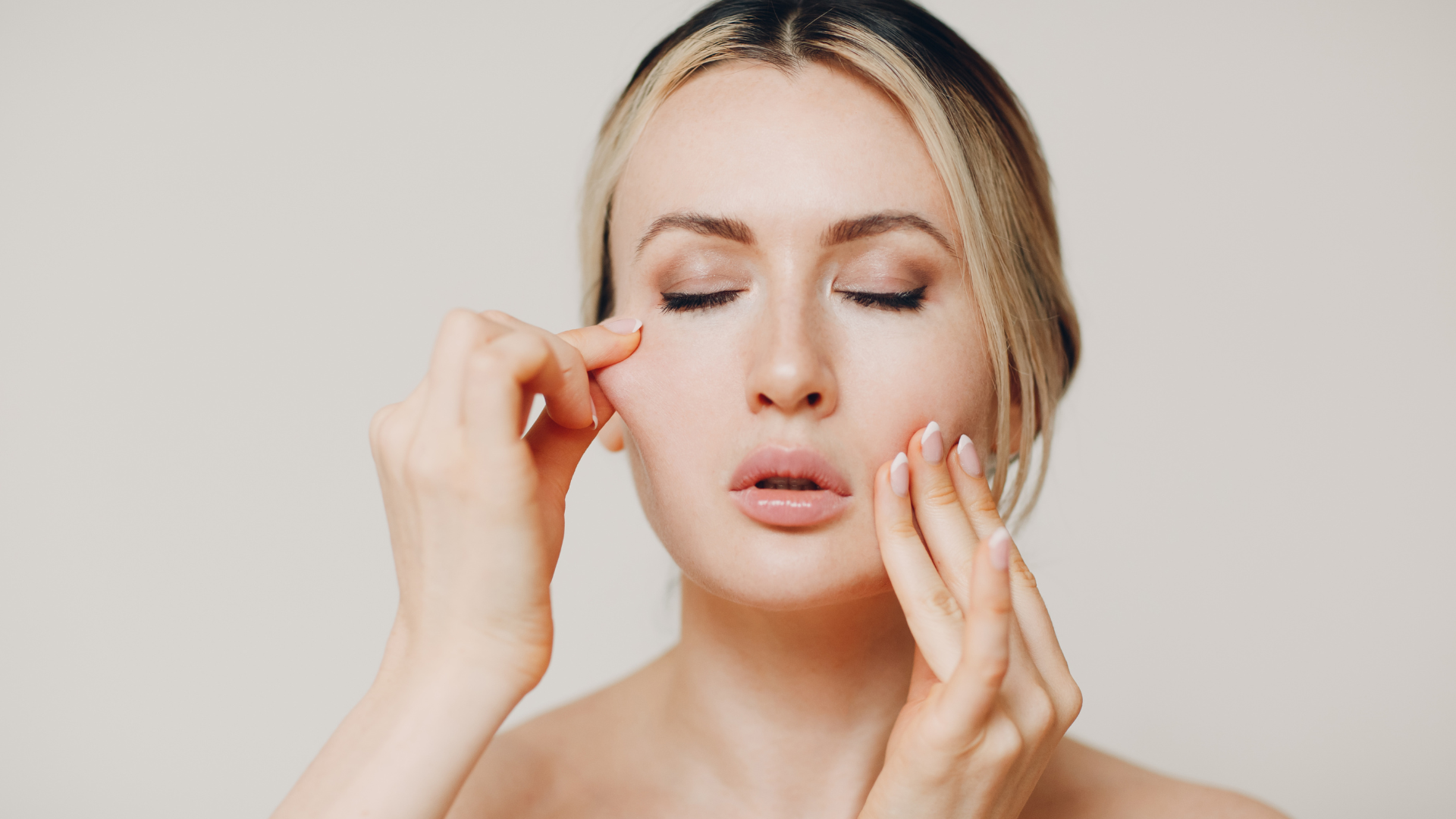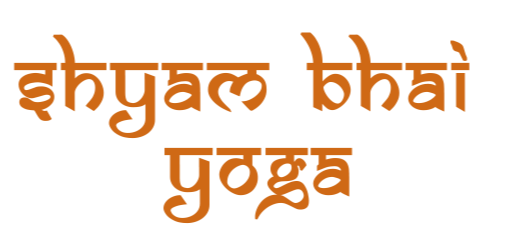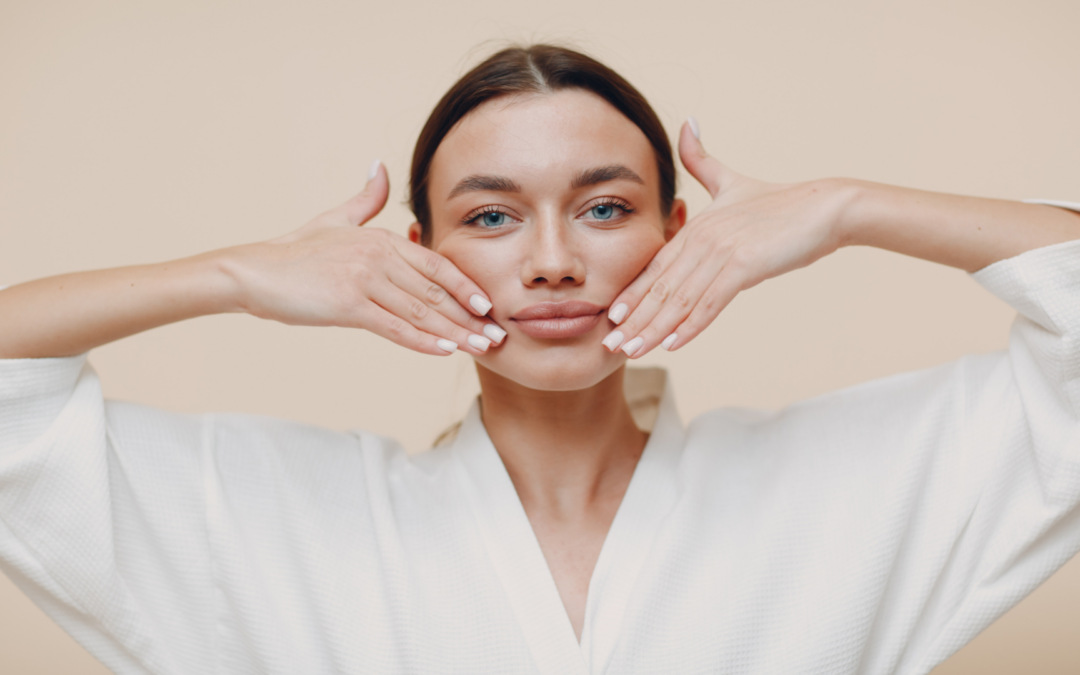How Does Face Yoga Help in Reducing a Double Chin?
The appearance of a double chin—that fullness beneath the chin and jawline—represents a common aesthetic concern for many people across age groups, body types, and genders. While sometimes associated with excess weight gain, double chins can also result from aging, genetics, posture, and facial habits. Face yoga offers a natural, non-invasive approach to addressing this concern through targeted exercises that tone underlying muscles, improve lymphatic drainage, and enhance overall facial posture and appearance.

Understanding Double Chin Formation
Before exploring face yoga solutions, understanding the factors contributing to submental fullness (the medical term for a double chin) provides context for how facial exercises may help:
Anatomical Factors
Several structural elements influence the chin and jawline appearance:
- Platysma Muscle: This thin, sheet-like muscle covering the front of the neck can lose tone with age or underuse
- Subcutaneous Fat: Fat deposits beneath the skin in the submental region can create fullness
- Skin Elasticity: Declining collagen and elastin reduce skin’s ability to remain taut against underlying structures
- Mandible Position: The natural position and size of the jawbone affects the profile silhouette
- Hyoid Bone Placement: This horseshoe-shaped bone above the larynx influences neck contour when its supporting muscles weaken
Contributing Lifestyle Factors
Various habits and conditions can exacerbate double chin appearance:
- Forward Head Posture: The increasingly common “tech neck” position weakens the under-chin muscles
- Facial Expression Habits: Limited facial movement patterns lead to uneven muscle development
- Fluid Retention: Poor lymphatic drainage can cause puffiness in the under-chin area
- Age-Related Muscle Atrophy: Facial muscles naturally lose volume and tone without targeted use
- Limited Range of Motion: Modern lifestyles rarely engage the full range of jaw and neck movements
How Face Yoga Addresses Double Chin Concerns
Face yoga works through multiple physiological mechanisms to improve the appearance of the chin and jawline:
1. Muscular Toning and Development
Just like body muscles, facial muscles respond to resistance training:
- Hypertrophy Response: Regular contraction against resistance builds muscle fiber strength and size
- Motor Unit Recruitment: Facial exercises activate muscle fibers that remain dormant in normal expression
- Muscle Memory Development: Consistent practice establishes new patterns of facial muscle engagement
- Balanced Muscle Development: Comprehensive face yoga addresses both surface and deeper muscle layers
- Muscular Endurance Building: Regular practice improves the sustaining capacity of facial muscles
Specialized Online Face Yoga Classes provide structured guidance in proper technique, ideal sequencing, and appropriate progression for addressing specific concerns like double chin appearance.
Research published in JAMA Dermatology demonstrated that consistent facial exercise programs led to measurable improvements in facial fullness and estimated age appearance, supporting the muscle-toning effects of regular practice.
2. Improved Lymphatic Drainage
Face yoga incorporates techniques specifically targeting lymphatic flow:
- Manual Drainage Movements: Gentle pressure and release sequences help move accumulated fluid
- Muscle Pump Activation: Strategic contractions create pressure changes that enhance lymphatic flow
- Circulation Enhancement: Increased blood flow helps remove metabolic waste products
- Reduced Fluid Stagnation: Regular movement prevents pooling in the submandibular area
- Toxin Elimination Support: Improved lymphatic function helps clear cellular waste products
These drainage-enhancing elements address the fluid component that sometimes contributes to the appearance of a double chin.
3. Postural Improvement
Many face yoga programs incorporate elements addressing the neck-jaw relationship:
- Cervical Alignment Awareness: Exercises bring attention to head-forward positioning
- Deep Neck Flexor Activation: Strengthens the often-neglected muscles supporting proper head position
- Jaw Positioning Consciousness: Develops awareness of jaw placement and tension patterns
- Ergonomic Integration: Techniques transfer to everyday positioning during activities like screen use
- Counterbalance Movements: Specific exercises offset habitual postures contributing to double chin appearance
These postural elements provide foundational support that enhances the effectiveness of more targeted toning exercises.
4. Skin Elasticity Enhancement
Regular face yoga may benefit the skin’s supportive matrix:
- Microcirculation Improvement: Increased blood flow delivers more nutrients to skin cells
- Fibroblast Stimulation: Physical manipulation may enhance collagen-producing cell activity
- Facial Fascia Release: Exercises help release fascial restrictions that can affect skin appearance
- Natural Oil Production Regulation: Balanced stimulation supports healthy sebum levels
- Surface Muscle Tone: Improved muscular support provides better foundation for overlying skin
While research specifically on face yoga’s effects on skin elasticity remains limited, anecdotal evidence and complementary research on massage techniques suggest potential benefits.
Also Read: Can Face Yoga Practices Help Alleviate TMJ Pain and Teeth Grinding?
Effective Face Yoga Exercises for Double Chin Reduction
The following exercises specifically target the submental region with progressive challenge levels:
1. The Neck Roll
This foundational exercise improves range of motion and awareness:
- Sit or stand with spine tall, shoulders relaxed
- Drop chin toward chest, feeling a gentle stretch at back of neck
- Slowly roll head to right shoulder, then back, then left shoulder
- Complete 3-5 circular movements in each direction
- Focus on smooth, controlled motion without jerking
Benefits: Releases neck tension, improves circulation, and establishes basic neck mobility before more targeted work.
2. The Chin Lift

This exercise directly targets the platysma muscle:
- Sit or stand with spine aligned, shoulders relaxed
- Tilt head back slightly, gazing toward ceiling
- Press tip of tongue firmly against roof of mouth
- Hold for a count of five while maintaining the position
- Perform 10-15 repetitions
Benefits: Activates and strengthens the under-chin muscles while creating a stretching sensation in the platysma.
3. The Jawline Sculptor
This more advanced exercise creates resistance training for jaw muscles:
- Sit with spine tall, shoulders relaxed
- Turn head to right at 45-degree angle
- Jut lower jaw forward, creating resistance with slight pressure from fingers
- Hold for 5-10 seconds while maintaining resistance
- Repeat on left side
- Perform 5-10 repetitions per side
Benefits: Provides resistance training for jawline muscles while defining the transition between neck and jaw.
4. The Platysma Toner
This exercise specifically targets the broad neck muscle that influences double chin appearance:
- Sit or stand with spine tall
- Pull corners of mouth downward while keeping lips closed
- Extend lower lip forward as far as possible
- Feel activation throughout neck area
- Hold for 5-10 seconds
- Release and repeat 10 times
Benefits: Directly targets the platysma muscle, improving tone in the area most visible in double chin formation.
5. The Lymphatic Drainer
This technique addresses fluid accumulation contributing to fullness:
- Apply light moisturizer or facial oil for slip
- Using three middle fingers, start under chin at center
- Apply gentle pressure while stroking outward toward ears
- Continue pattern from center outward, moving gradually down neck
- Repeat sequence 5-10 times
Benefits: Enhances lymphatic flow, reducing puffiness that can contribute to double chin appearance.
Creating an Effective Practice Routine
For noticeable results, consistency and proper technique matter:
Recommended Practice Schedule
- Frequency: Daily practice yields best results, with 5-6 days weekly as a minimum
- Duration: 10-15 minutes per session provides sufficient stimulus without overwhelming
- Timing: Morning practice reduces overnight puffiness; evening practice addresses daily fluid accumulation
- Progression: Begin with 2-3 repetitions of each exercise, building gradually to recommended amounts
- Patience: Visible changes typically begin appearing after 4-6 weeks of consistent practice
Technique Enhancement Tips
- Mirror Use: Practice initially with mirror feedback to ensure proper form
- Breath Coordination: Pair movements with conscious breathing for enhanced effectiveness
- Mindful Engagement: Focus attention specifically on target muscles rather than creating general tension
- Full Face Integration: Combine double chin exercises with full facial routines for balanced results
- Photographic Tracking: Take weekly photos from same angle/lighting to objectively monitor progress
Accessing Expert Guidance
While self-directed practice offers benefits, proper instruction ensures optimal technique and results.
For those seeking a more comprehensive approach to wellness that includes facial rejuvenation within overall practice, Online Yoga Classes offer integrated programs addressing body-mind connection that influences facial appearance.
Complementary Approaches for Enhanced Results
Face yoga works most effectively when supported by complementary practices:
Postural Awareness Throughout the Day
- Maintain “neck-back alignment” during smartphone use
- Position computer screens at eye level to avoid chin tucking
- Practice periodic posture resets during desk work
- Use neck alignment cues during daily activities
- Implement gentle stretches throughout the day
Hydration and Nutrition Support
- Ensure adequate water intake to support lymphatic function
- Moderate sodium consumption to reduce fluid retention
- Include antioxidant-rich foods supporting skin health
- Consider collagen-supporting nutrients like vitamin C
- Limit alcohol and caffeine that can contribute to dehydration
Stress Management Integration
- Incorporate relaxation techniques reducing face tension
- Practice jaw relaxation during stressful moments
- Implement conscious breathing to release facial holding patterns
- Notice emotion-related facial tensions
- Create awareness of unconscious chin-tucking during concentration
By addressing the multiple factors contributing to double chin appearance—muscular weakness, lymphatic congestion, postural patterns, and tissue elasticity—face yoga offers a comprehensive approach that can create noticeable improvements when practiced consistently with proper technique. Unlike invasive procedures, these natural methods not only enhance appearance but also improve overall facial function and awareness while supporting the body’s inherent capacity for balance and regeneration.
Inquiry
If you have any questions, please feel free to reach out. We’ll be glad to help!

